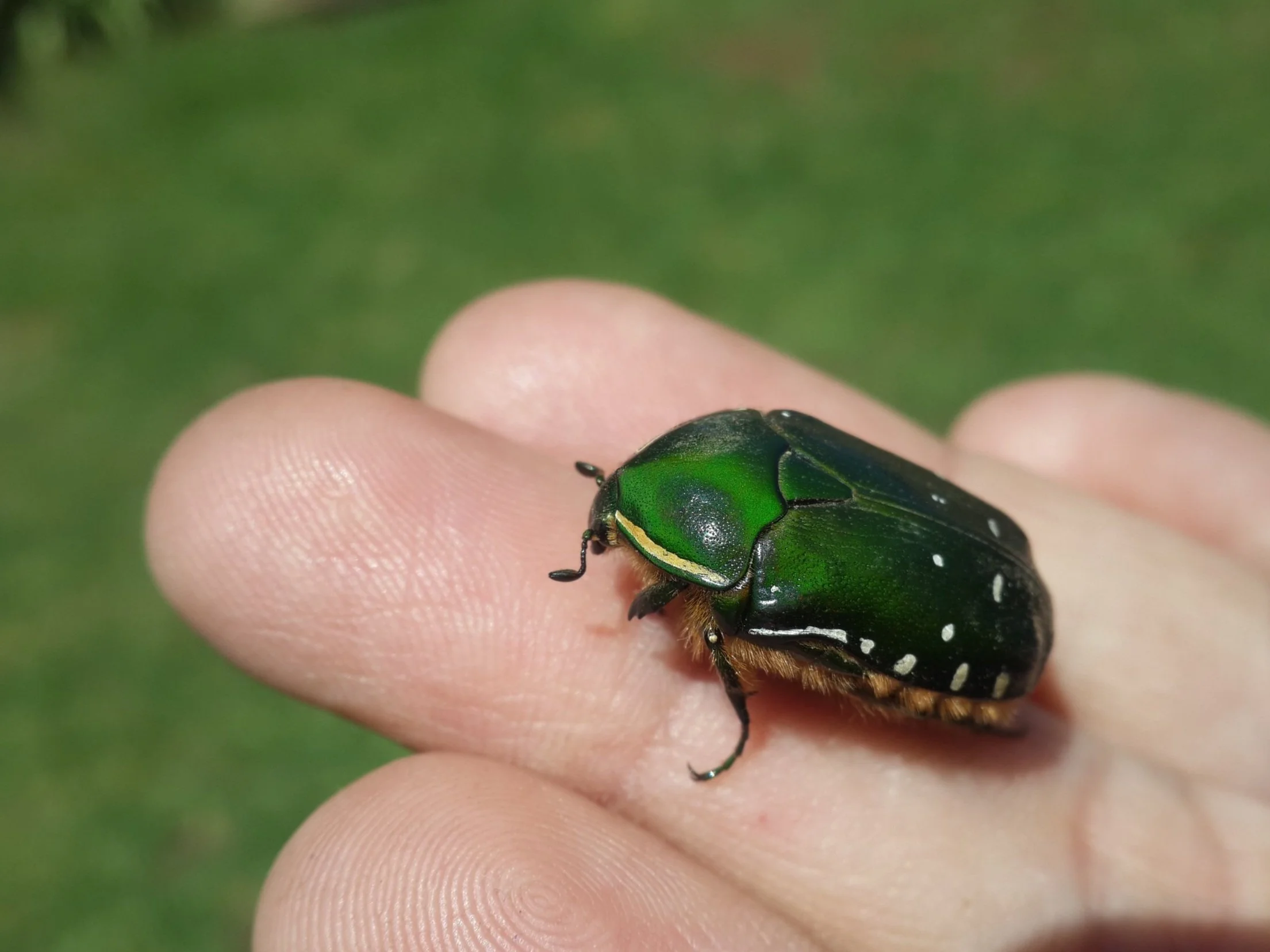After mowing grass for three hours last week, I decided to take a water break from the heat. I plopped into a shady chair on the barn porch to rest and hydrate. That is when I noticed something odd. It appeared that the entire grass pasture in front of me was in motion. Was I having an aneurysm? A hallucination? When I walked over to investigate, I found that the air just above ground level was thick with hundreds, maybe thousands, of flying green beetles commonly known as June Bugs. They could just as easily be called May-through-July bugs because they emerge in mid-summer.
As a child, I and the rest of the kids in the ‘hood delighted in the capture of one of these hard-shelled, inch-long beetles. We would carefully tie a piece of sewing thread around the insect’s midsection and allow him to fly freely, restrained to a circular flight pattern by the string tether, held securely in a grubby little hand. (Do kids do this anymore?) When the activity became boring, we would cut the thread and let Mr. June Bug fly away. Everybody knew the bugs were harmless. Or were they?
Green June Bugs do not carry diseases and they do not bite. They are harmless to humans and pets but their legs have spines and it may feel like a pinch when they land on you. They do not infest homes but June Bugs are not harmless. They rank slightly below Japanese Beetles in terms of plant damage. They are voracious vegetarians and can cause significant damage to crops. Their preferred diet is berries, tomatoes, grapes, peaches, plums, figs, or corn. When these juicy treats are not available, they happily munch on grasses, oak leaves, and flowers,.
Green June Bugs (Cotinis nitida, found all over the southeast) go through a complete metamorphosis. They start life as eggs (laid in shallow soil, in groups of 10-30), then live as grubs for three years. They pupate and emerge as adults when soil temperatures hit 70 degrees. While a few adults overwinter underground, most live less than a year, dying at the end of summer. Skunks and large birds like crows eat the grubs.
Dead adults are usually found belly up. As they approach death, their bug-blood ceases flowing to their legs, which then cannot support their weight so they topple over. They are attracted to night-time lights (males more so than females) and may commit suicide by bombing your outdoor bonfire, kamikaze-style. Snakes, lizards, frogs, and birds are natural predators to the adults.
If you think you are seeing more June Bugs than in past years, you are correct. Warmer weather temperatures support population growth. If their damage becomes noticeable, you might want to take steps to reduce their numbers. Try to take the natural approach before resorting to insecticides.
June Bugs are repelled by the scent of essential oils such as lavender, mint or rosemary. Milky Spore bacteria can be used to combat the grubs. It is effective against Japanese Beetle grubs also. Milky Spore is available in many garden centers and some big box stores. Instructions for application are found on the container.
While Milky Spore is not a quick fix, it is long lasting and harmless to humans or pets. There are two widely available insecticides (Carbaryl and Trichlorfon) which are labeled for use against June Bugs. Read labels and follow instructions exactly. A preemptive systemic insecticide (Imidacloprid is one) can also be used. Please use systemics as a last resort and only on non-food plants, because some studies indicate they are contributing to honeybee hive collapse.
Do those yellow “bug light” bulbs really work? Well, June Bugs find them, as well as yellow Sodium Vapor parking lot lights, less attractive than white incandescent lights. LED bulbs do not attract them, another good reason to change over to energy-saving bulbs.
Folklore says that June Bugs are blind. This is untrue. They walk or fly into things because they are naturally clumsy. If they should fly into your hair, their leg spines may become entangled. This feels creepy, even if your common sense tells you they cannot bite. Capture your insect carefully and find a child for a game of June Bug Airplane. If no children are available, go ahead and lasso one with sewing thread. I won’t tell.

